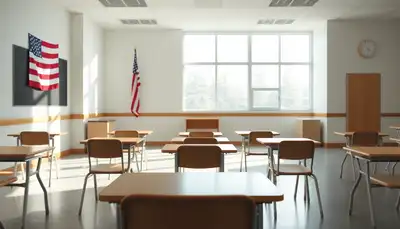From Ivy dreams to visa nightmares: Are Indian students safe in US classrooms anymore?

The American dream—an utopia long nurtured by thousands of Indian students—is now teetering on the brink of collapse. Harvard, Stanford, and the Ivy League once enshrined that dream.Today, one of America’s most revered institutions, Harvard, finds itself at the heart of a storm after being told: No more foreign students. Behind the polished glass and pristine lawns of elite campuses, the American welcome mat is being quietly withdrawn—one visa at a time.On Thursday, in a move that sent tremors through global academia, the Trump administration stripped Harvard University of its ability to enroll international students. The Department of Homeland Security declared: “Harvard can no longer enroll foreign students,” and ordered that “existing foreign students must either transfer or risk losing their legal status.”For international students dwelling there and especially the tens of thousands from India, the rolling repercussions are not restricted to being academic. It is existential. The sudden policy shift exposes them to immediate legal peril, including forced transfers to unfamiliar institutions or the looming threat of deportation. Visas are not mere documents anymore; they have become tightropes stretched over uncertainty.This is no longer a bureaucratic purgatory- it is a piercing, striking political signal. For Indian students, who make up the largest cohort of the United States, the message is written in black and white: You are dispensable and America is not a safe haven.
A war declared on international minds
Homeland Security Secretary Kristi Noem ordered the termination of Harvard’s certification under the Student and Exchange Visitor Program (SEVP), citing the university’s failure to submit foreign student conduct records requested by DHS last month. The White House asserted that “enrolling foreign students is a privilege, not a right,” accusing Harvard’s leadership of turning the campus into a hub of anti-American and anti-Semitic sentiment.While Harvard is ruling the headlines, the shockwaves transcend beyond the gates of the esteemed campus. Over 6,800 students make up the student population in Harvard, comprising it to be 27% according to the institute’s data. The Department of Homeland Security’s decision to revoke Harvard’s authority to host international students, without prior consultation or warning—has introduced unprecedented legal precarity into students’ lives.The order demands that existing students transfer immediately to other certified institutions or risk becoming undocumented.The administration’s justification lies in allegations about campus safety and conduct. However, the consequences do not just sit on ideological references- they are logistical, legal, and deeply personal.
Collateral damage: Indian students in the crossfire
This is not a theoretical policy shift—it is a live immigration emergency. With Harvard’s SEVP (Student and Exchange Visitor Program) certification revoked, all F-1 and J-1 visa holders are legally stranded. They must find alternate universities within days, ones that are not only SEVP-certified but willing to accept a sudden influx of displaced students.The bureaucratic web is tight. Transfers must be documented, approved, and reflected in the SEVIS database almost immediately. Failing to do so could trigger visa violations that lead to deportation and long-term bans from re-entering the United States.
The psychological collapse
Alongside a legal free fall comes a mental health crisis. Students who had once churned out academic futures are now paralysed and crippled by uncertainty. Anxiety levels are surging. Therapy services are overbooked. Support groups have turned into emergency briefings.For Indian students in particular—many of whom are navigating this crisis thousands of miles from home—there is a sense of betrayal.Families back home are panicking. Calls to embassies are going unanswered. And students are making impossible choices: Should they transfer, drop out, or risk overstaying and becoming undocumented?
The education economy: Undermined from within
Well, as the Trump administration has made it loud and clear that international students are a liability. The data speaks differently. International students injected over $40 billion annually into the US economy in 2022-23 year according to various media reports. Indian students alone contribute $8 billion to the US economy. Their tuition fees often fund not only their own education, but research grants, faculty salaries, and institutional infrastructure.Now, universities are watching as a critical revenue stream is targeted for political gain. If Harvard can lose its certification, any university can. Institutions once confident in their global prestige are suddenly uncertain about their international future.The resounding message echoes in the Ivy League corridors: Their existence depends not on imparting excellent academic merit but on their ability to conform to political mandates.
‘You are not welcome here’: The new American message
The crackdown on Harvard is only part of a larger pattern: Ideological vetting of campuses, pressure on student activism, and an emerging narrative that foreign students are a national liability.The crackdown on Harvard is not an isolated concept but is interwoven with ideological vetting of campuses, pressure on student activism, and an emerging narrative that foreign students are a national liability.This is not associated with campus safety – it is about silencing dissent and controlling mobility. And for Indian students, it compels a recalibration of whether the US still represents opportunity for only conditional tolerance.
The dream was never bulletproof
For decades, Indian students braved sky-high tuition, visa backlogs, and cultural adaptation to access American higher education. But today, it’s not the costs or coursework that threaten them—it’s the ground beneath their feet.No scholarship guarantees protection. No GPA can offset a revoked visa. What was once a dream built on ambition now feels like a trap sprung by policy.As Fall 2025 looms, thousands face an agonising truth: The land of academic liberty may have closed its doors—not with a bang, but with a bureaucratic decree.





